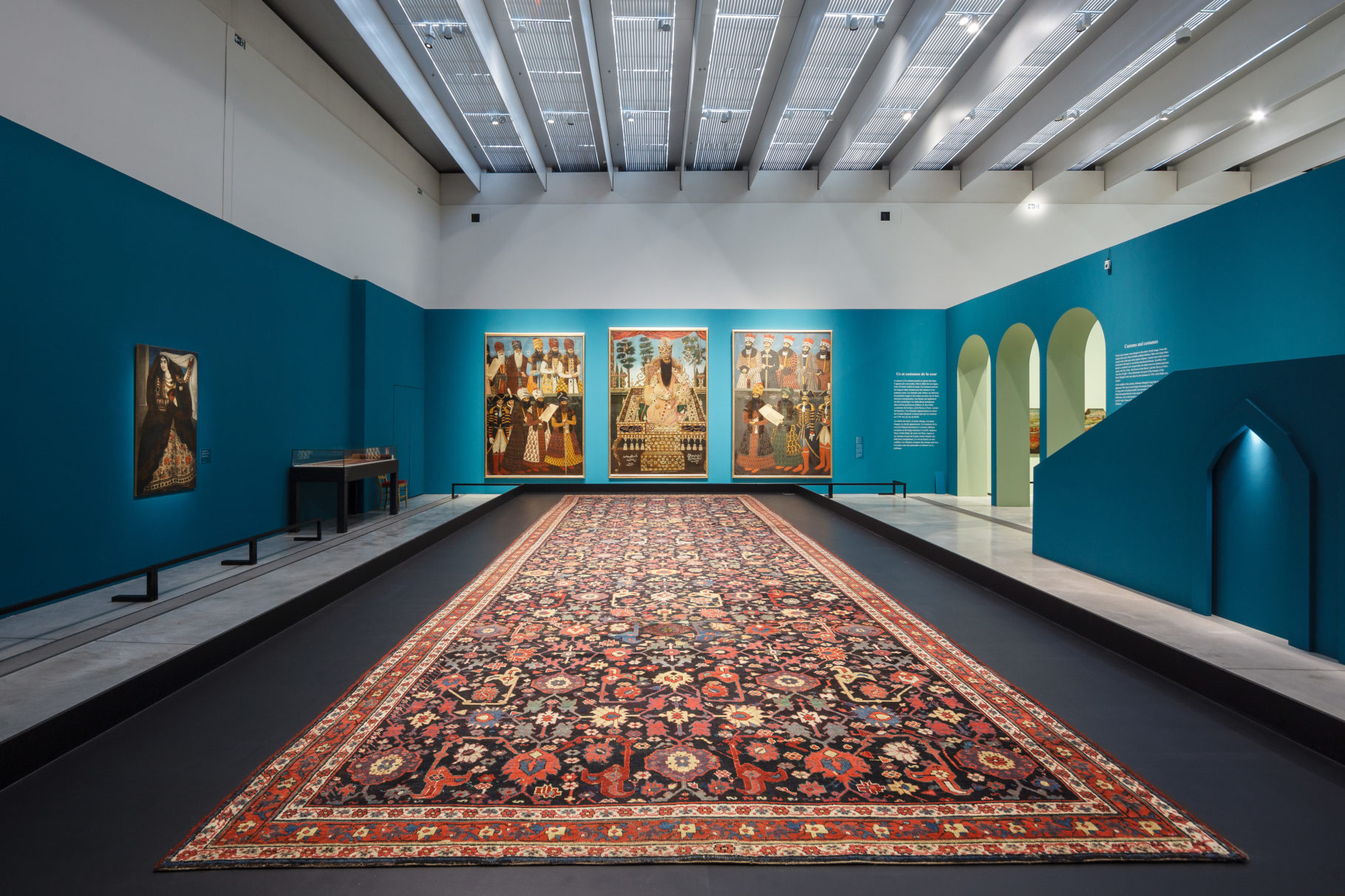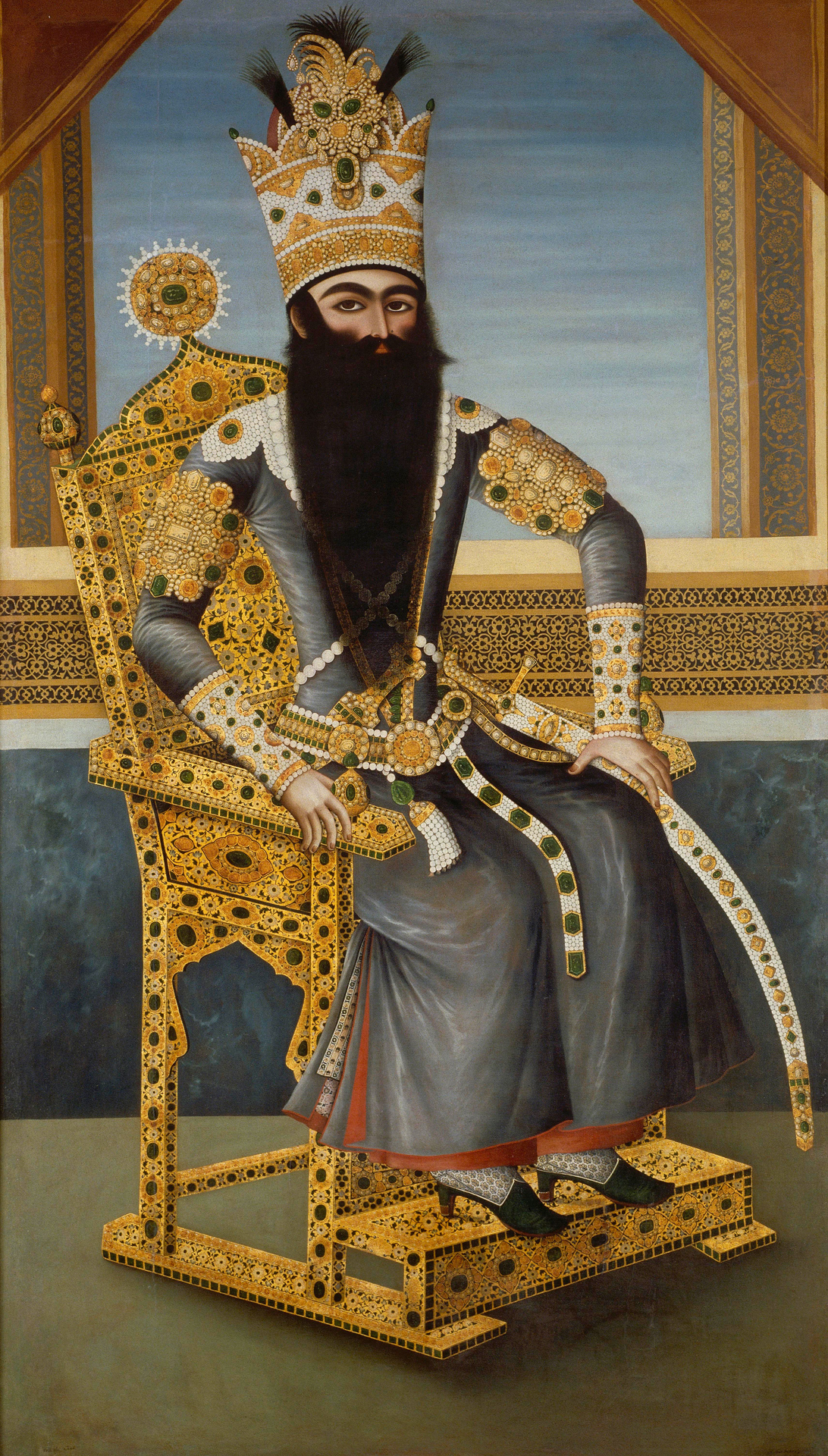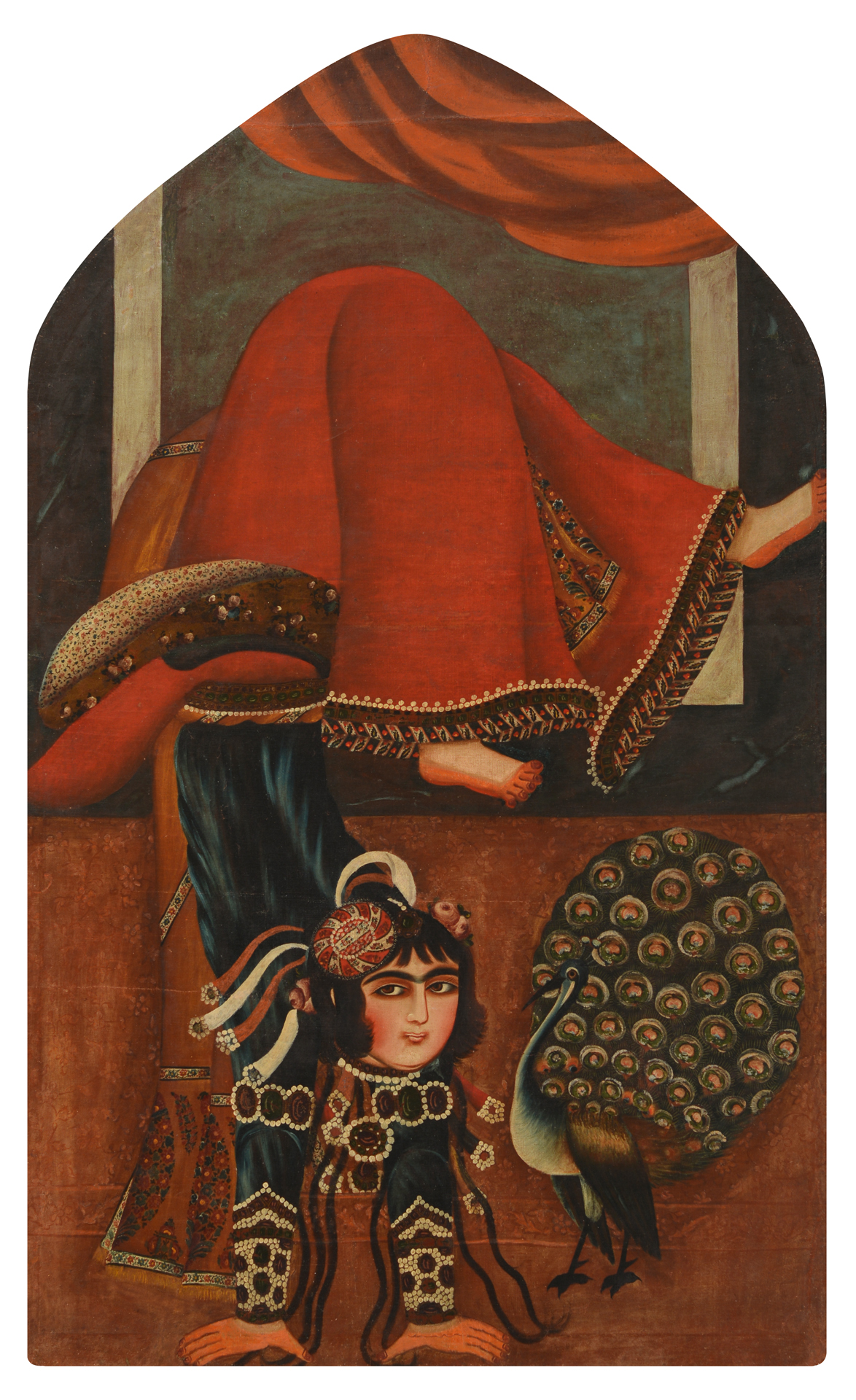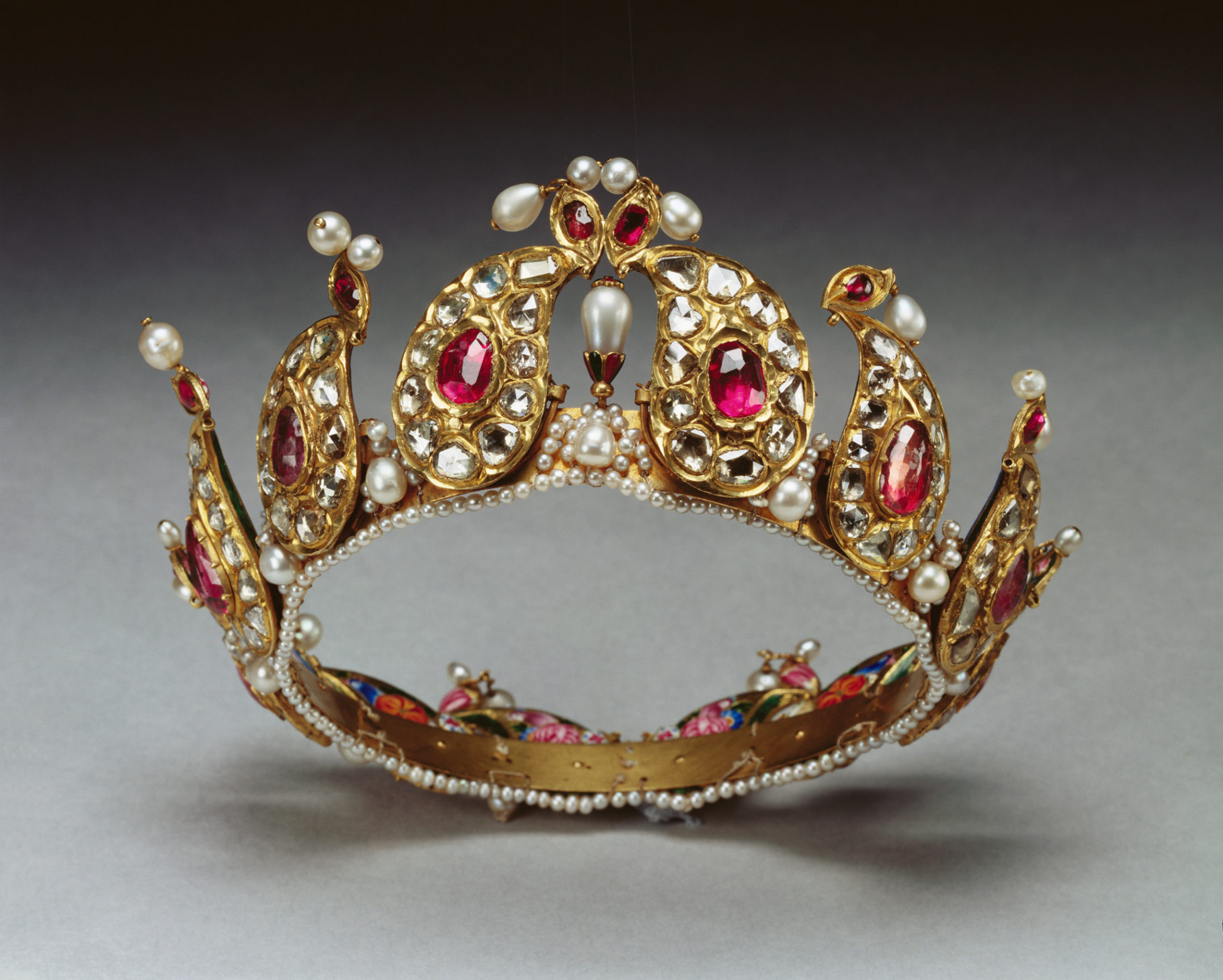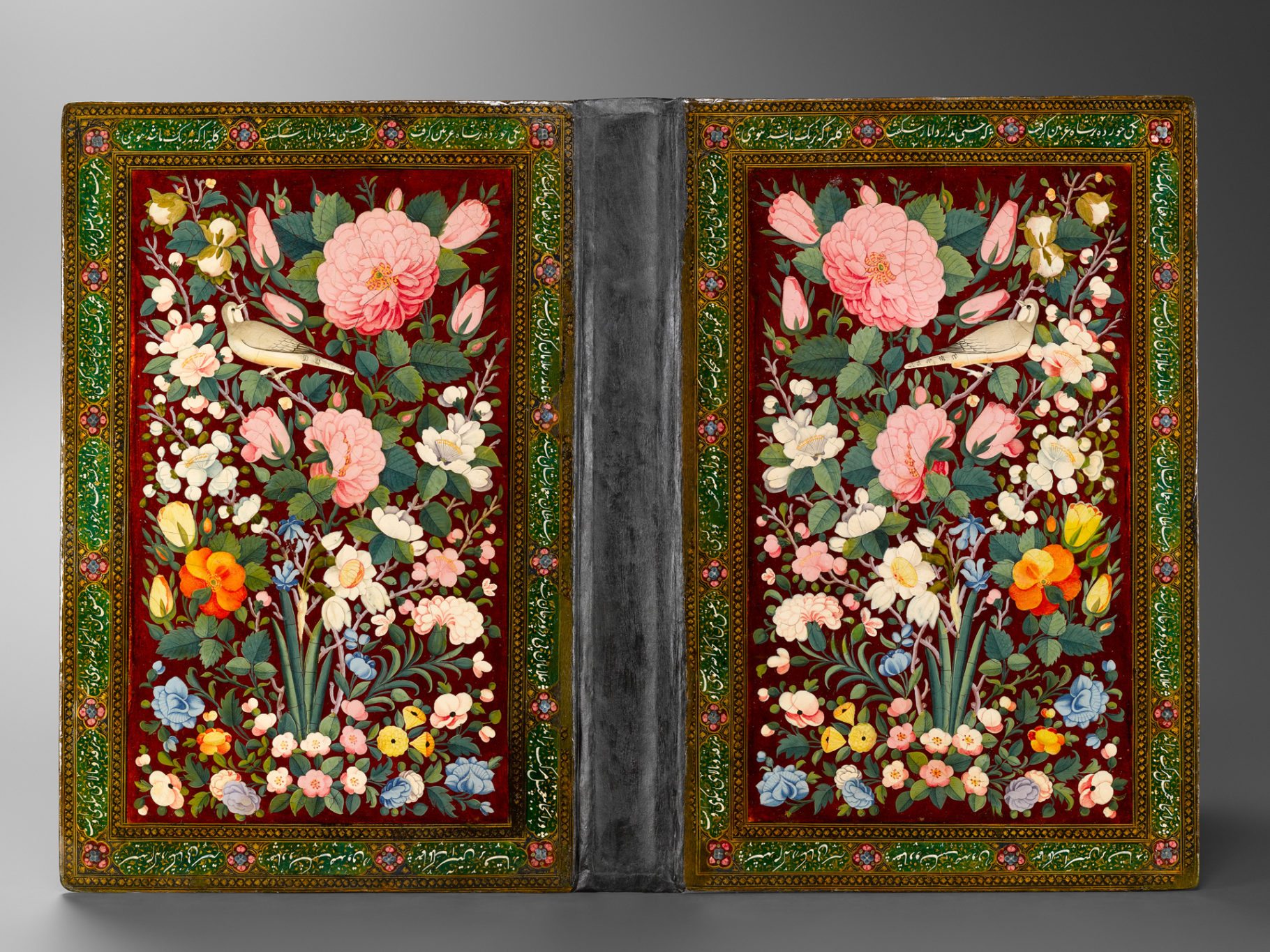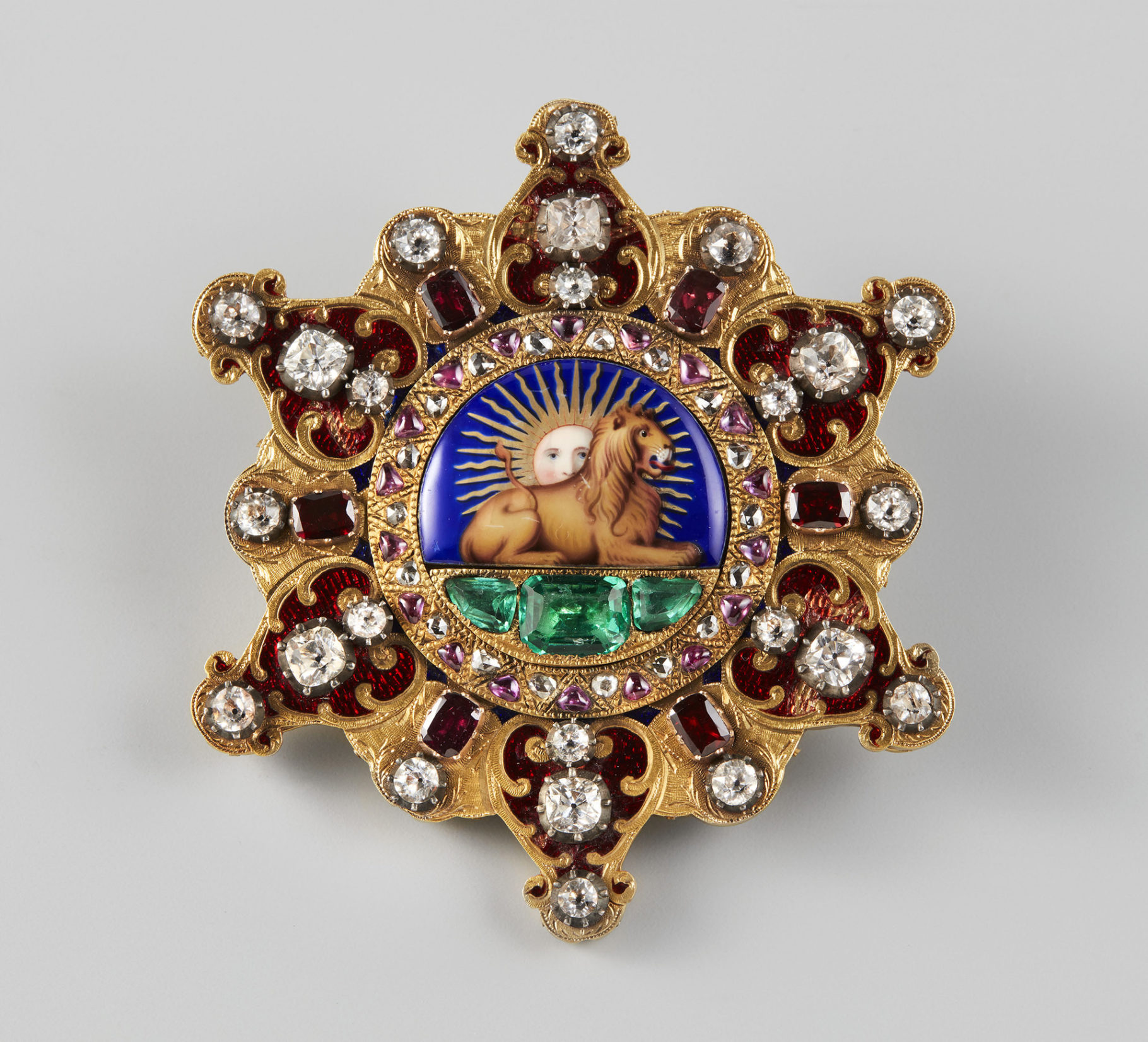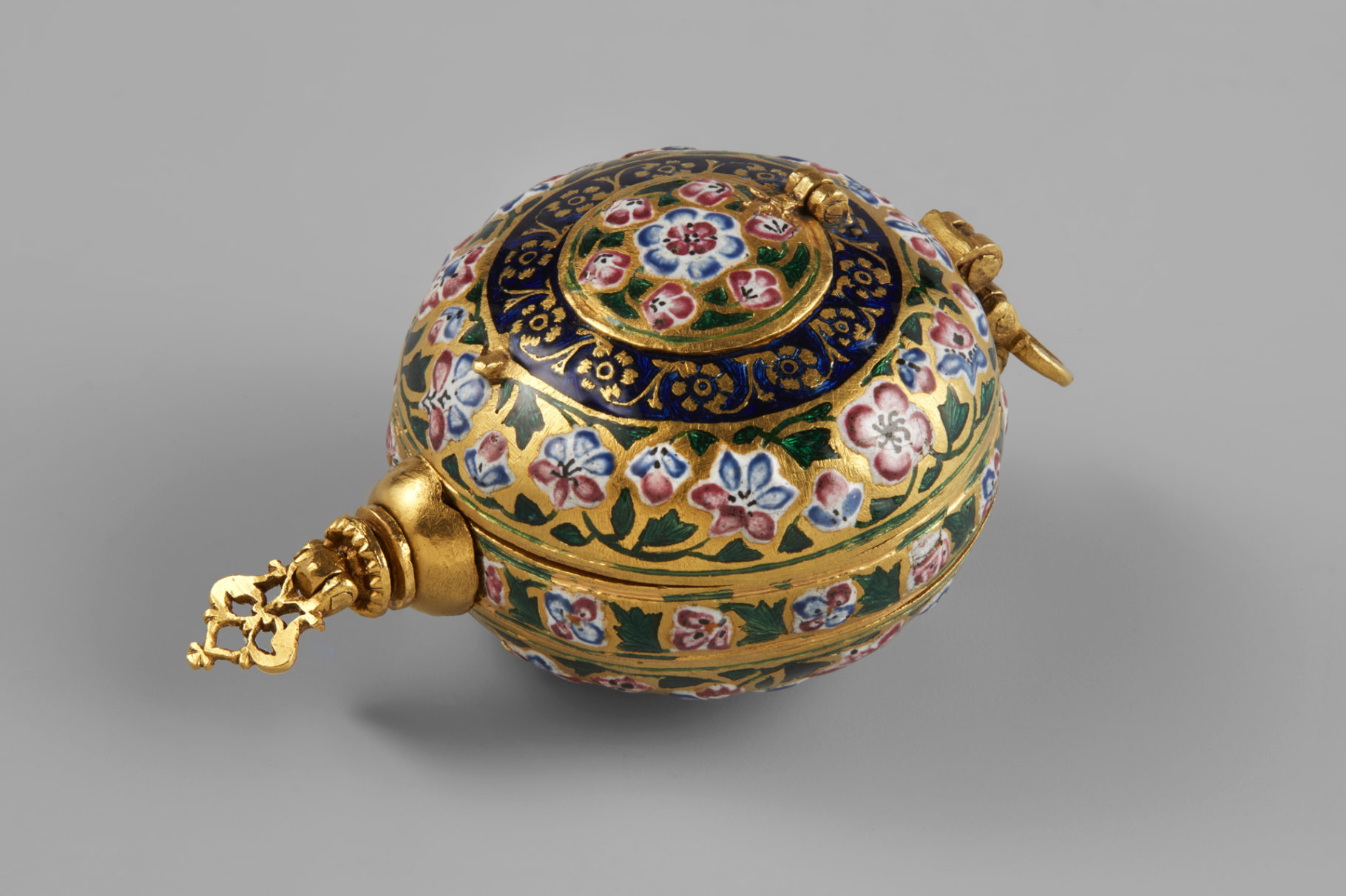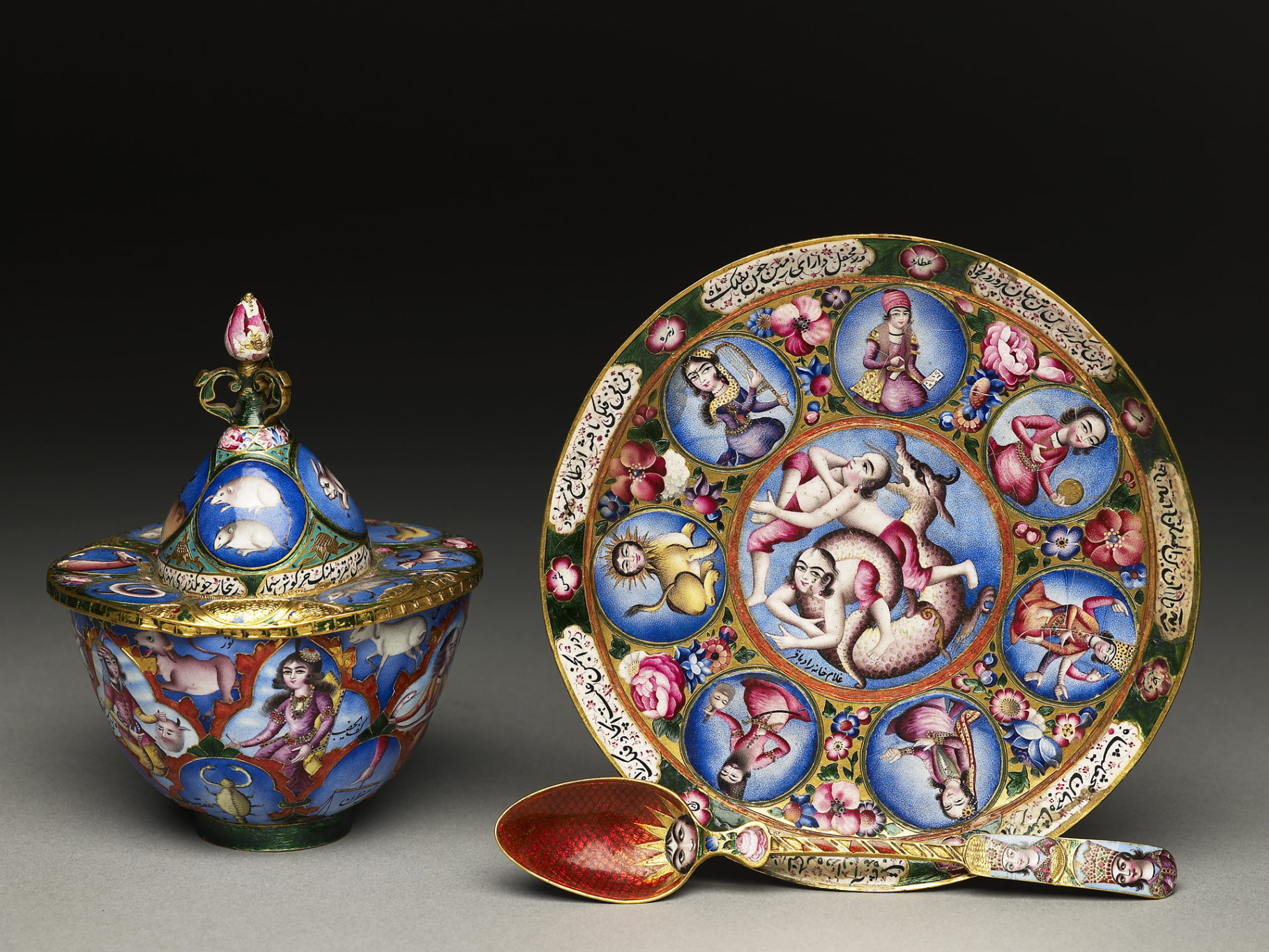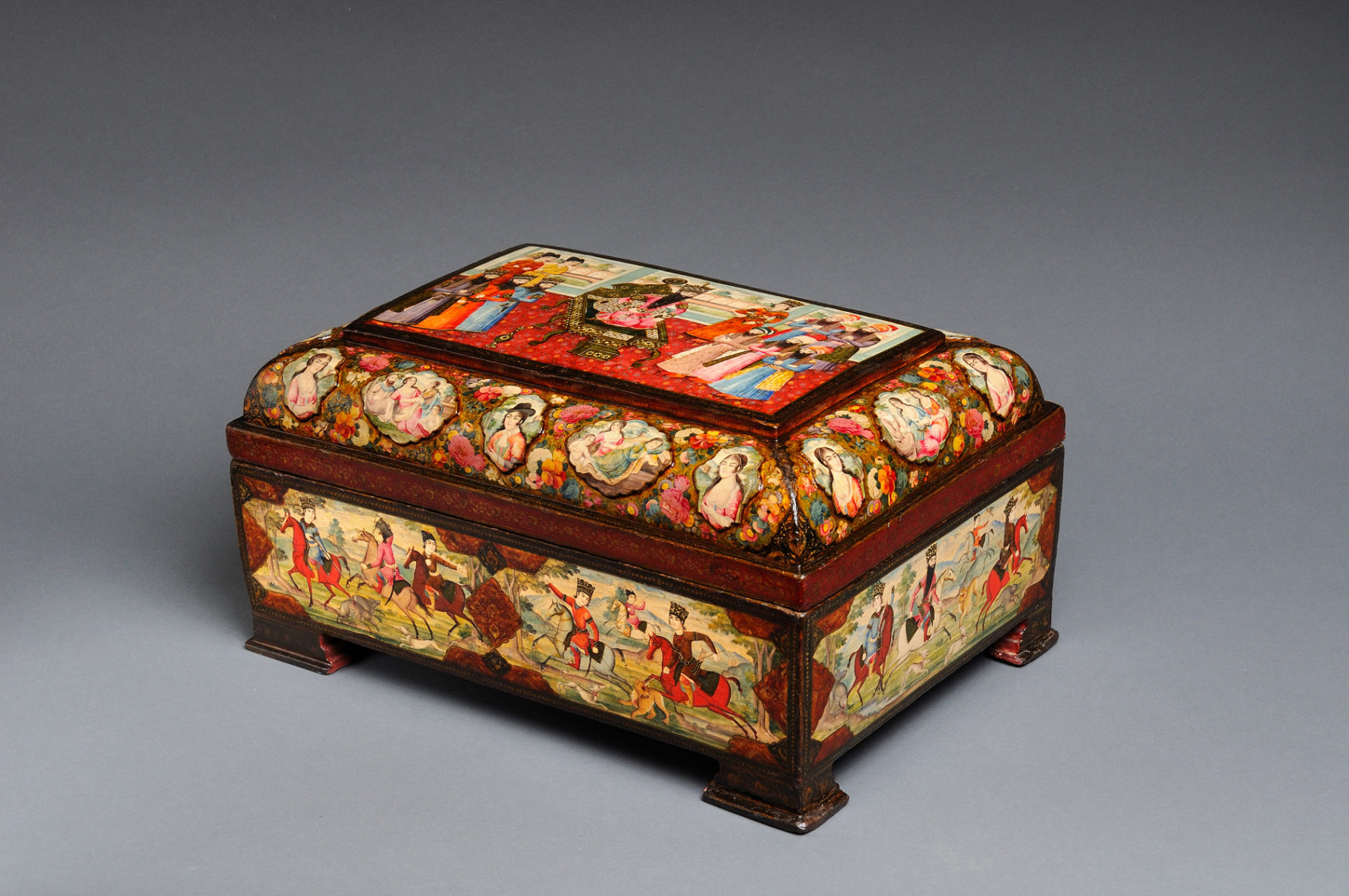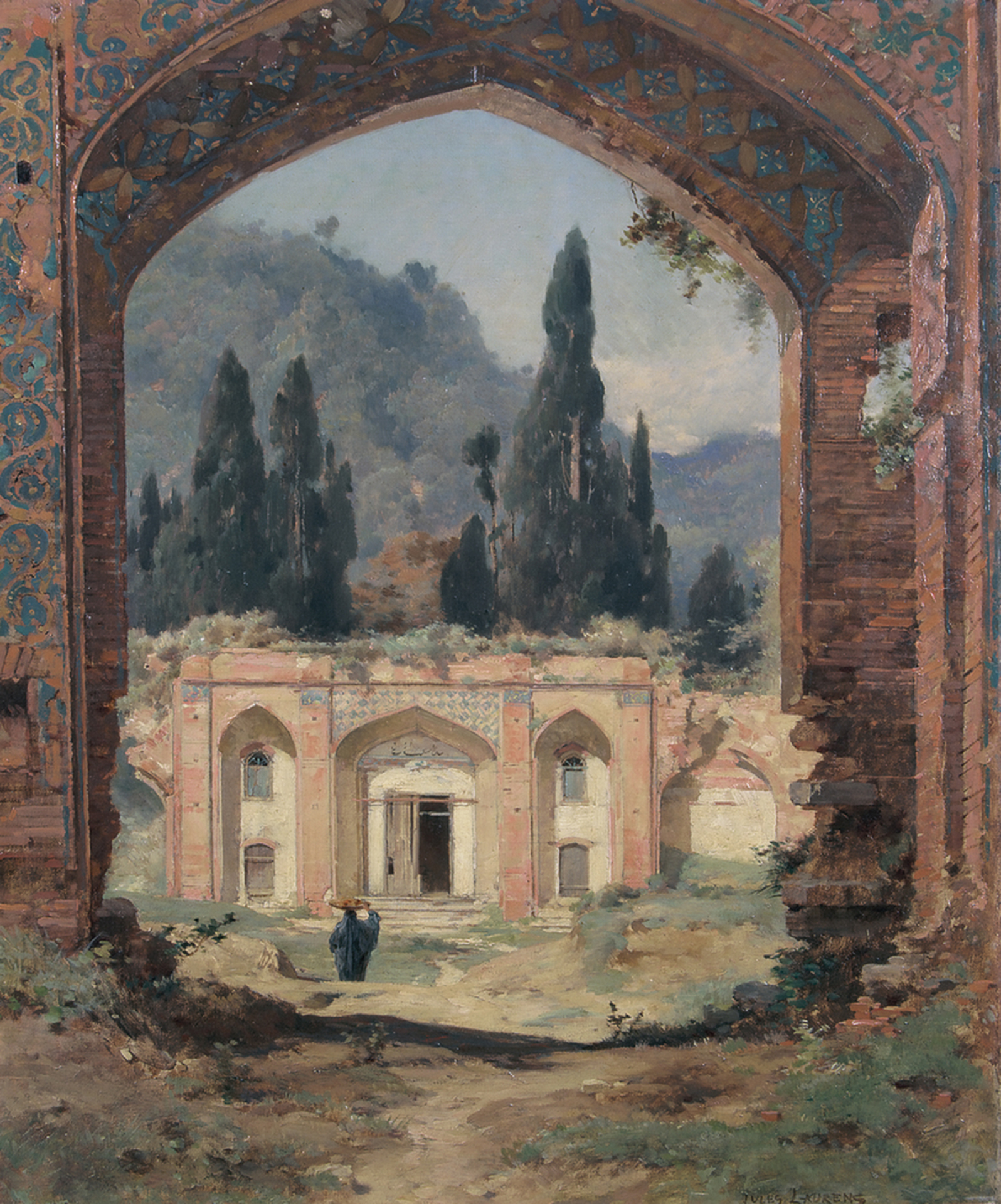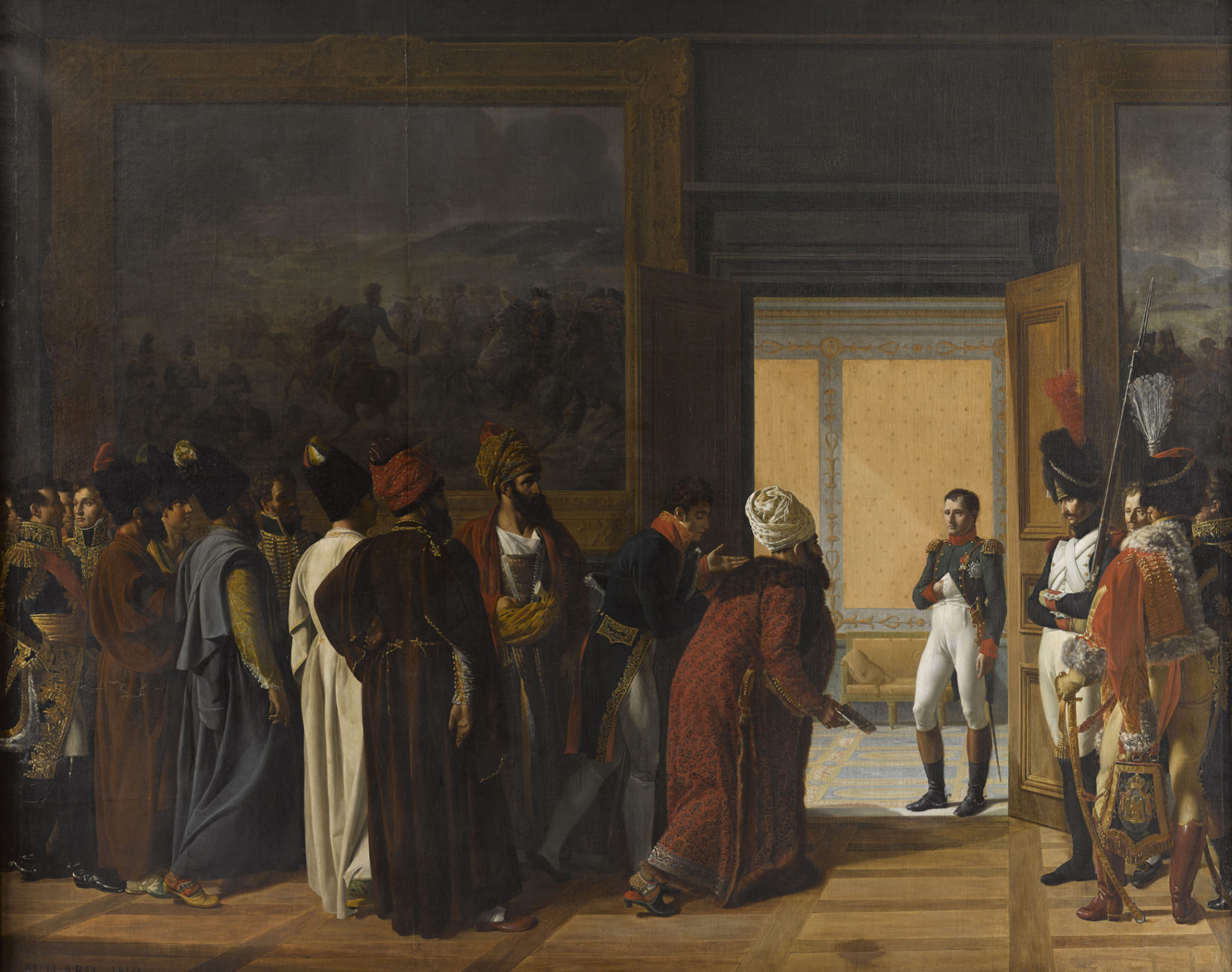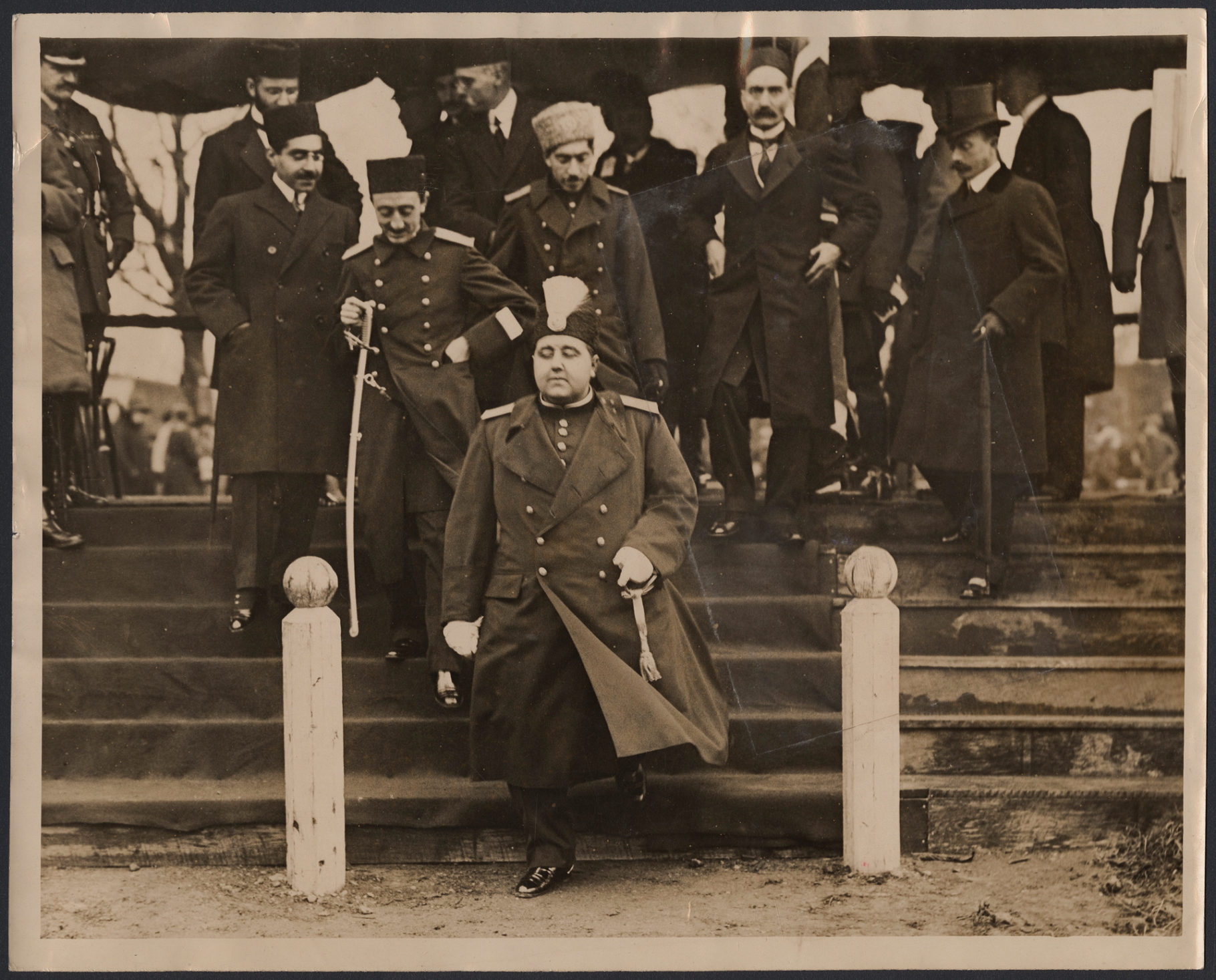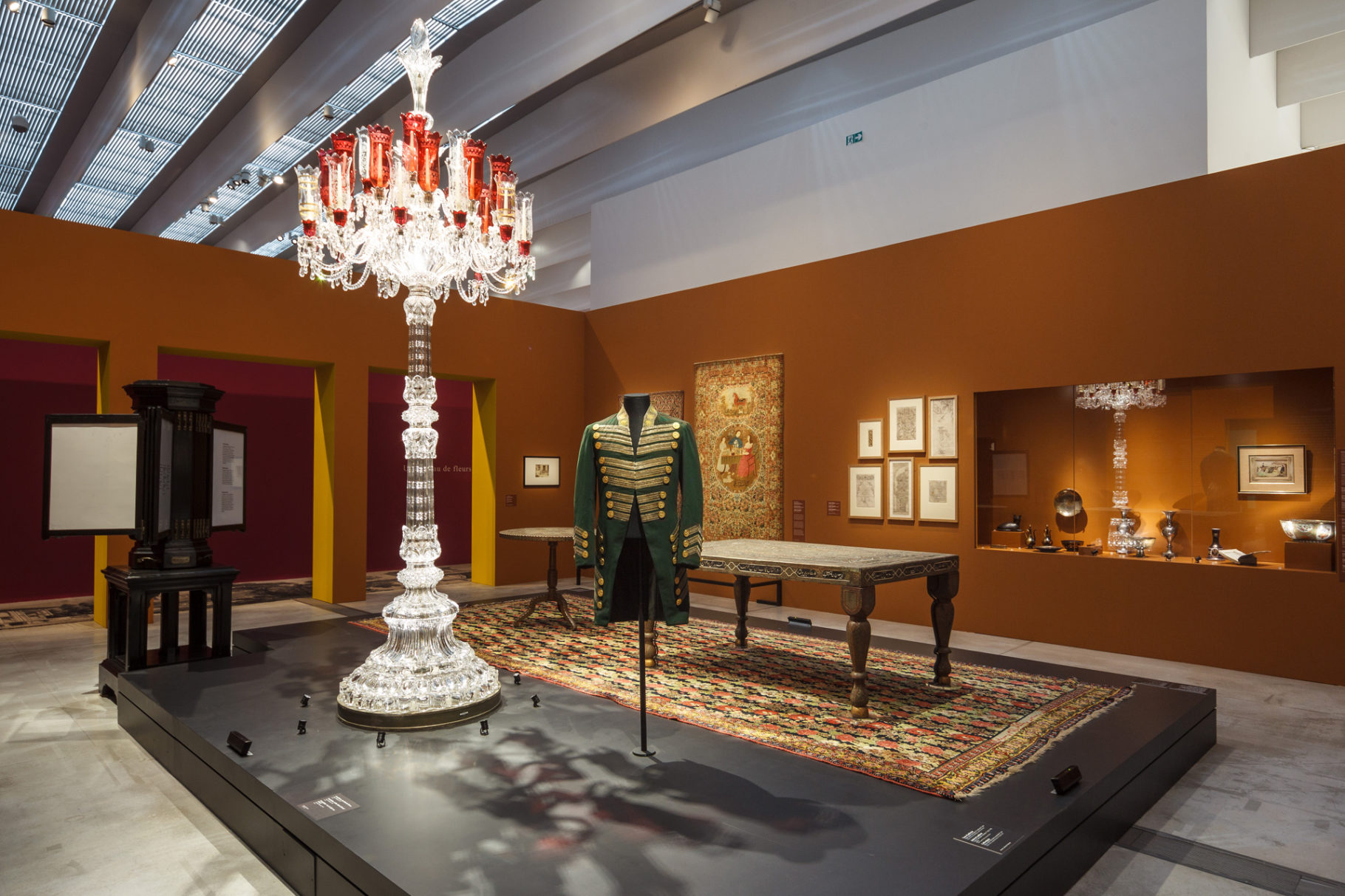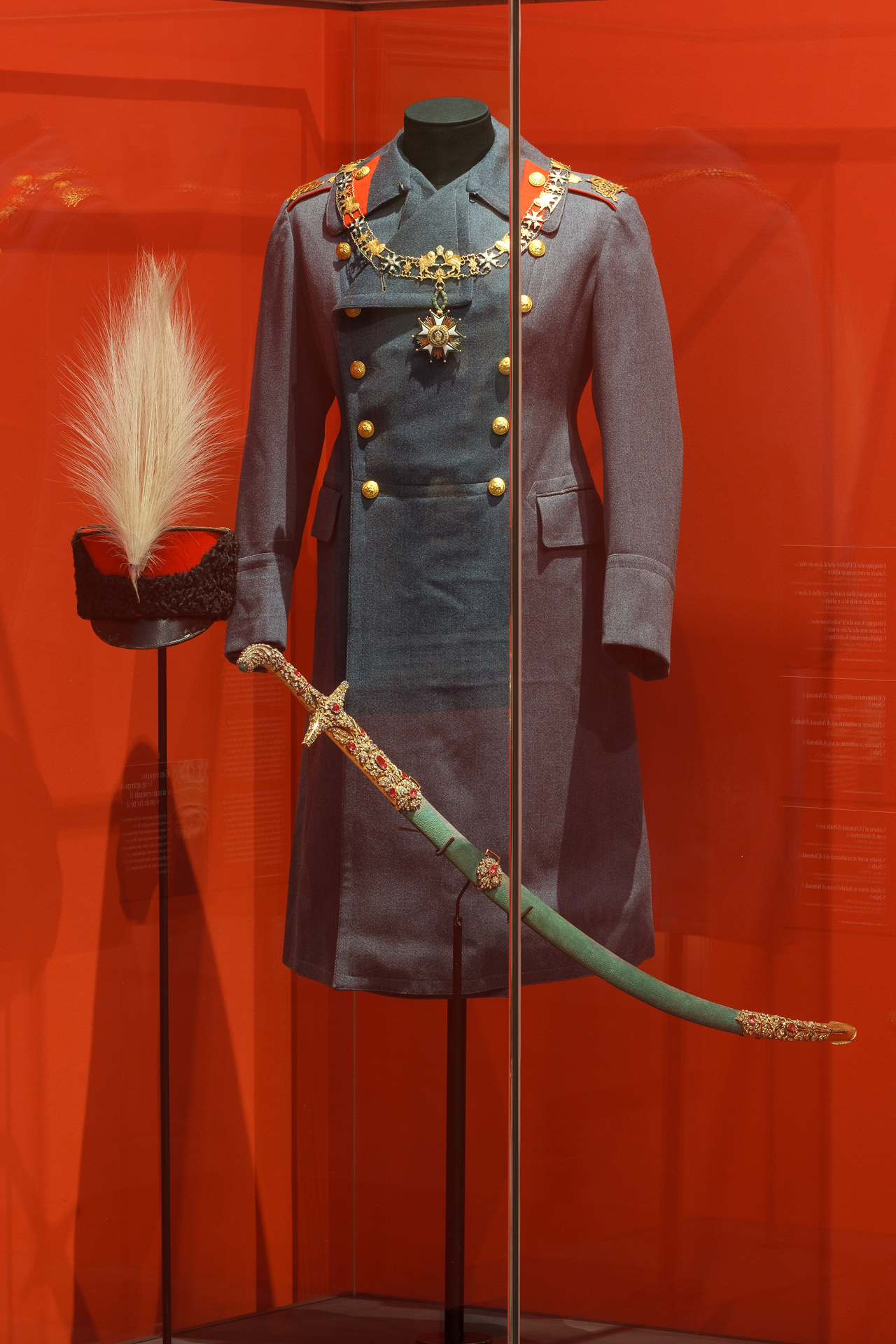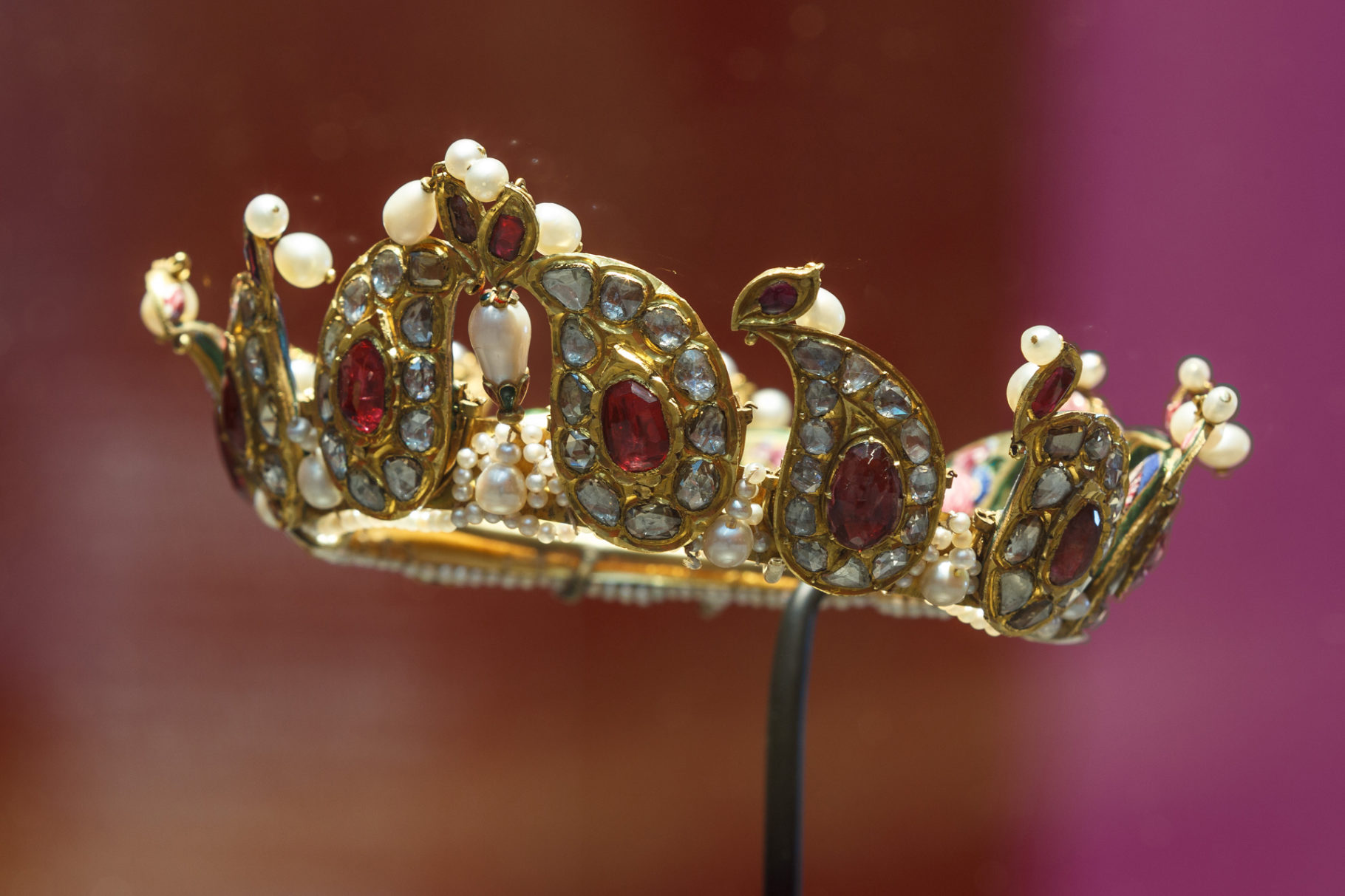Masterpieces Of The Rose Empire
‘The Rose Empire’ by the Louvre Museum at Lens is an ode to the Qajar dynasty of Iran. The exhibition, the first of its kind in France, displays over 400 works – many of them making their debut appearance in the world – dedicated to the magnificent art of the glorious sovereigns who ruled Iran from 1786 to 1925.
The original, rich, and bountiful art of this period was created predominantly by exceptional court artists who form the focus of this exhibition. The art is sourced from a wide range of private collections and famous European, North American and Middle Eastern institutions. The exhibition features drawings, jewellery, photographs, ceremonial weapons, and more, brought together by curator Gwenaëlle Fellinger and associate curator Hana Chidiac, complemented by the scenography of haute couture fashion designer Christian Lacroix.
There were seven Qajar rulers in total, with the last being Ahmad Shah. As a key transitional period, Qajar history remains a major point of reference for contemporary Iranian artists working today. During this extraordinary period, the artistic development of pieces intended for the court focused on traditional techniques such as painting, glasswork and metalworking, elevating these fields to a new level of excellence. At the same time, new techniques began to appear, including photography, which played a central role following its introduction in the 1840s. While the major iconographical themes endured, the styles used to depict them changed considerably and had a profound impact on Iranian art.
The layout of the exhibition is divided into four parts: The introductory section presents the drawings, surveys, paintings, and works of two important European travellers – painter Jules Lauren and architect Pascal Coste – side by side. Both published books on their travels in Persia, promoting a growing European interest in the art and architecture of Iran in the 19th century.
The second section offers a cultural overview of the Qajar period. After passing through a portrait gallery featuring the various sovereigns, visitors are invited to reflect on the close links that the dynasty maintained with its European counterparts from the start of the century. The third section examines the courtly arts and how they became codified according to an aesthetic unique to the Qajar dynasty. As artists themselves, the Shahs were conscious of the importance of artistic production from a political standpoint. Ceramic panels, vast oil paintings, rugs, jewellery, clothes and musical instruments all played a role in moulding the image of the dynasty. The last section presents the artists, the way their status developed throughout the century, and their encounters with modernity. In doing so, it sheds light on the artists of the time and on the major themes explored in painting, pottery, and metalworking. The artists were fascinated by European innovations such as photography and lithography, which went on to revolutionise Iranian art. This final section of the exhibition is punctuated by exceptional works such as an enormous Baccarat crystal chandelier.
The rooms are therefore grouped into four architectural units that correspond to the four main sections of the exhibition, separated by alleys. Each unit can be identified by varying shades of a certain colour, characteristic of both Qajar art and the world of Christian Lacroix: blue, red, green and yellow. Walls hung with silk and walkways covered with rugs created by the designer recall the sumptuousness of Iranian textiles.
The name of the exhibition is a twofold reference to both literature and the setting for Qajar rule: The 13th-century Persian poet Saadi was the author of the Gulistan (“The Rose Garden”), one of the most famous collections of poems and stories in Persian literature. When the first Qajar sovereigns settled in Tehran, they gave their palace the same name- the kar-e Golestan (Gulistan Palace). Today, the Palace remains the main museum exhibiting Qajar art in Tehran.
‘The Rose Empire’ will be on display till 23rd July, 2018 at the Louvre-Lens.
